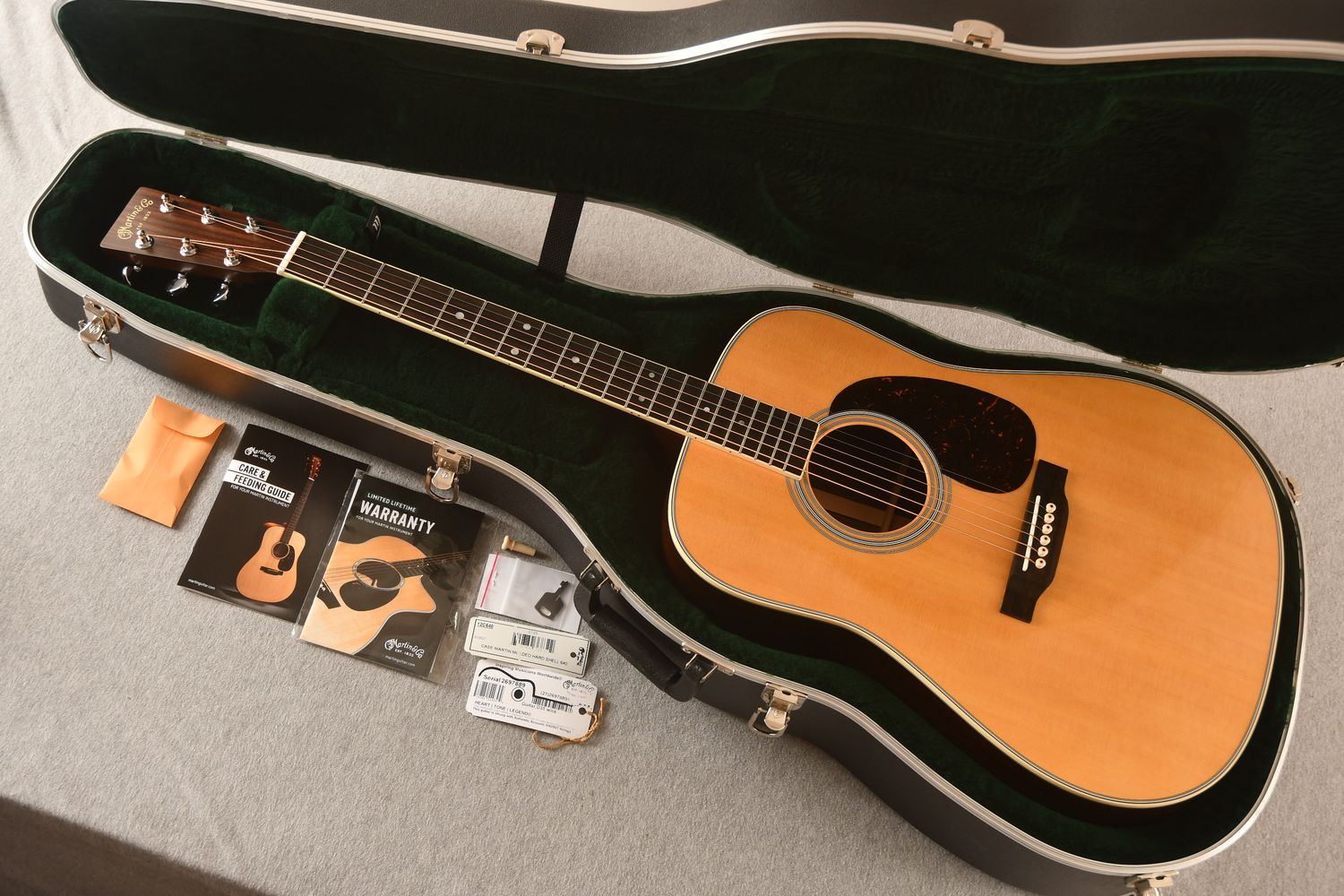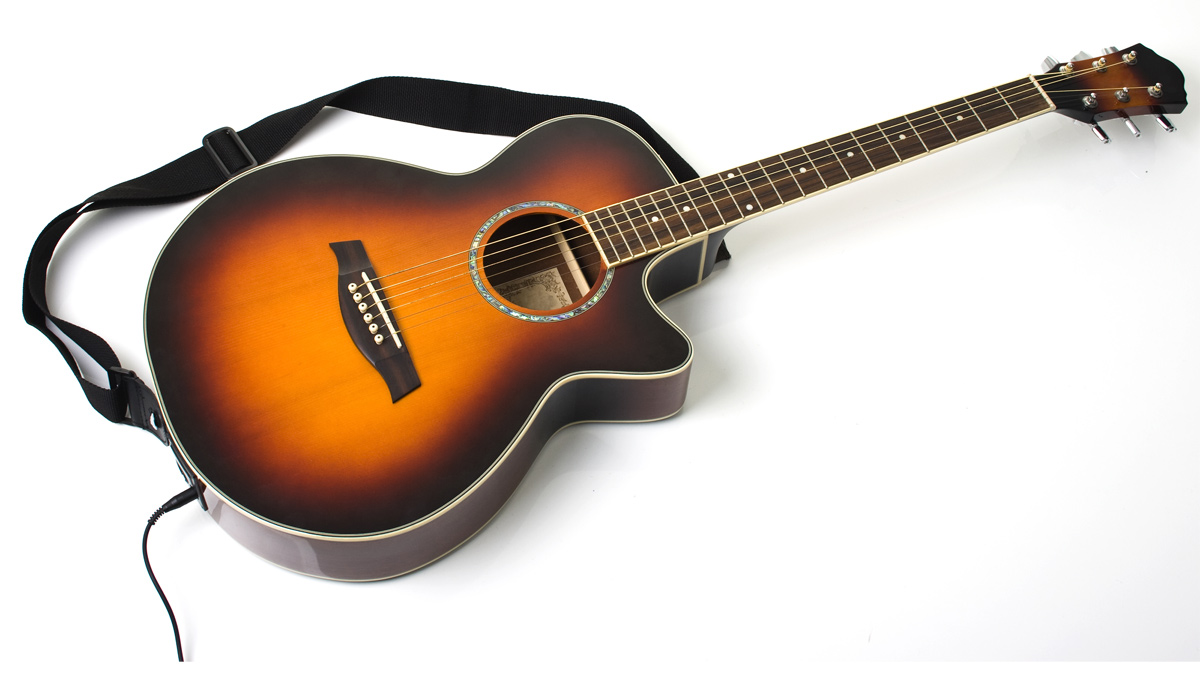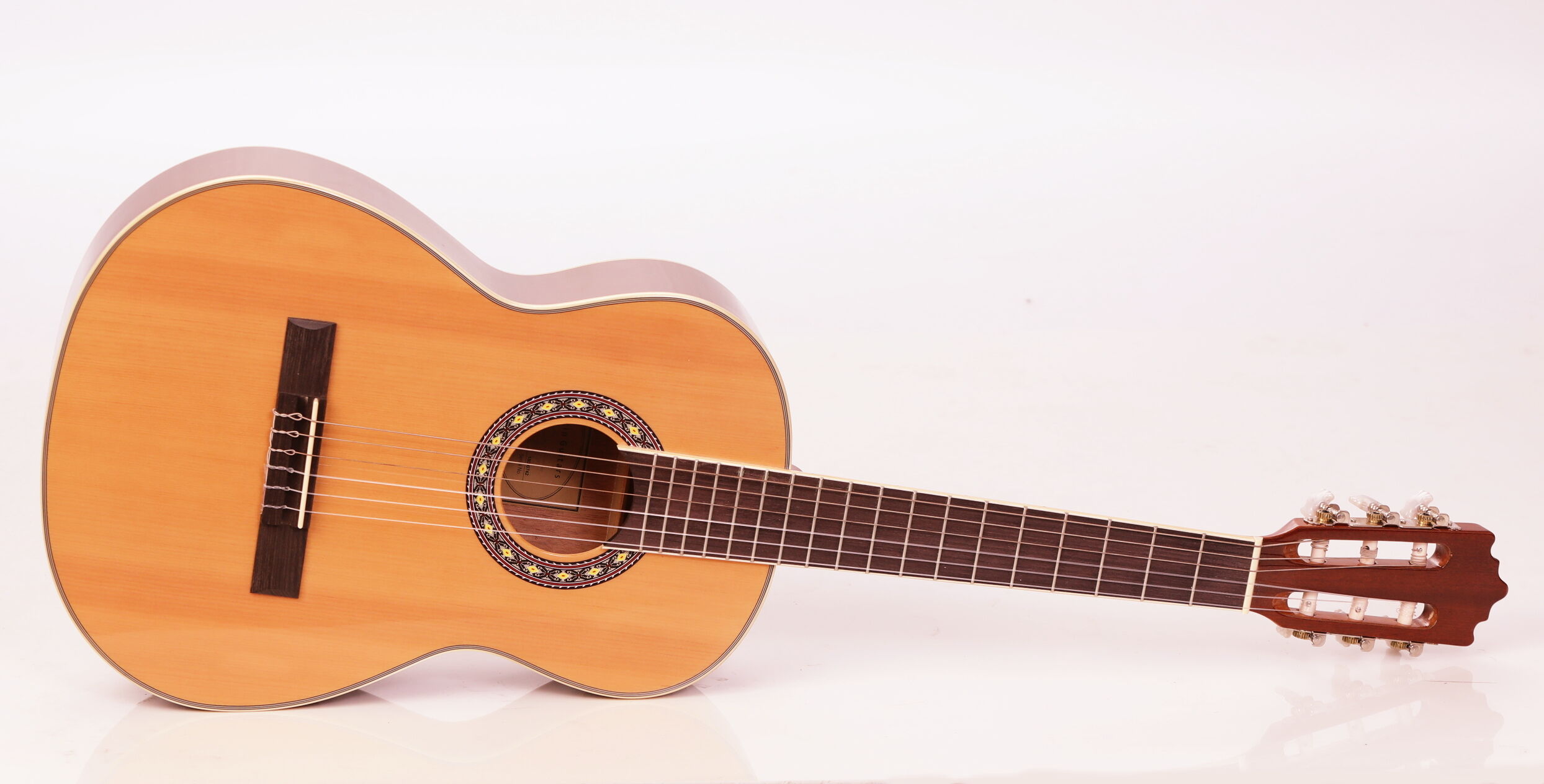Home>Production & Technology>Acoustic>What To Clean Acoustic Guitar With


Acoustic
What To Clean Acoustic Guitar With
Published: March 11, 2024
Discover the best cleaning products and methods for maintaining your acoustic guitar. Keep your instrument in top condition with our expert tips and recommendations.
(Many of the links in this article redirect to a specific reviewed product. Your purchase of these products through affiliate links helps to generate commission for AudioLover.com, at no extra cost. Learn more)
Table of Contents
Introduction
Maintaining the pristine condition of your acoustic guitar is essential for preserving its sound quality and longevity. Regular cleaning not only enhances the instrument's appearance but also safeguards it from wear and tear. Whether you're a seasoned musician or a novice strummer, understanding the proper techniques and materials for cleaning your acoustic guitar is crucial. In this comprehensive guide, we will delve into the importance of cleaning an acoustic guitar, the materials required, step-by-step cleaning instructions, and valuable tips for maintaining its cleanliness.
A well-maintained acoustic guitar not only looks impressive but also produces a superior tone. Over time, dust, sweat, and oils from your hands can accumulate on the guitar's body, fretboard, and strings, affecting its playability and sound. Neglecting regular cleaning can lead to a buildup of grime, which may eventually impact the instrument's resonance and structural integrity. By incorporating a regular cleaning routine into your guitar care regimen, you can ensure that your instrument remains in optimal condition, allowing you to fully enjoy its rich, resonant tones for years to come.
In the following sections, we will explore the materials needed for cleaning, provide detailed step-by-step instructions for effectively cleaning an acoustic guitar, and offer valuable tips for maintaining its cleanliness. By following these guidelines, you can elevate your guitar maintenance routine and preserve the beauty and performance of your beloved instrument. Let's embark on this journey to discover the art of cleaning and maintaining an acoustic guitar, ensuring that it continues to inspire and delight with its timeless melodies.
Importance of Cleaning an Acoustic Guitar
Regular cleaning of an acoustic guitar is paramount for several reasons. Firstly, it contributes to the instrument's longevity and structural integrity. Dust, sweat, and oils from the player's hands can accumulate on the guitar's body, fretboard, and strings over time. If left unattended, this buildup can lead to corrosion, affecting the guitar's playability and sound quality. By implementing a consistent cleaning routine, you can prevent the accumulation of grime and preserve the instrument's pristine condition.
Furthermore, maintaining a clean acoustic guitar is essential for preserving its aesthetic appeal. A well-kept instrument not only reflects the owner's care and dedication but also enhances the overall playing experience. Whether it's a cherished heirloom or a prized performance tool, a clean guitar exudes a sense of pride and professionalism.
In addition to preserving the guitar's appearance and playability, regular cleaning also contributes to the instrument's tonal quality. Dust and grime can dampen the vibration of the strings and affect the resonance of the guitar's body, resulting in a muffled or subdued sound. By keeping the guitar clean, you can ensure that it produces a clear, vibrant tone, allowing its inherent beauty and musicality to shine through.
Moreover, a clean acoustic guitar promotes a hygienic playing environment. Regular removal of sweat and oils from the instrument's surfaces not only prevents the spread of germs but also contributes to a more comfortable and enjoyable playing experience. By maintaining a clean and sanitized guitar, players can focus on their music without concerns about unhygienic conditions.
In summary, the importance of cleaning an acoustic guitar cannot be overstated. It is a fundamental aspect of guitar maintenance that directly impacts the instrument's longevity, playability, aesthetic appeal, tonal quality, and overall hygiene. By incorporating regular cleaning into your guitar care routine, you can ensure that your instrument remains in optimal condition, allowing you to fully appreciate its beauty and musical potential.
Materials Needed for Cleaning
When it comes to cleaning your acoustic guitar, having the right materials at your disposal is essential for achieving optimal results. Here's a comprehensive list of the materials you'll need to effectively clean your beloved instrument:
-
Lint-Free Microfiber Cloths: These soft, non-abrasive cloths are ideal for gently wiping down the guitar's body, fretboard, and strings without leaving behind lint or scratches.
-
Guitar Polish/Cleaner: Specifically formulated for use on guitars, a high-quality guitar polish or cleaner helps remove smudges, fingerprints, and light grime while enhancing the instrument's shine.
-
Fretboard Conditioner: Designed to moisturize and protect the fretboard, a fretboard conditioner helps prevent drying and cracking, ensuring the wood remains in optimal condition.
-
String Cleaner/Lubricant: A string cleaner or lubricant aids in removing built-up residue and prolonging the life of the strings, contributing to a smoother playing experience.
-
Soft Bristle Brush: A soft-bristled brush is useful for gently removing dust and debris from hard-to-reach areas such as the bridge, saddle, and nut.
-
Guitar Stand or Soft Pad: Placing the guitar on a stable stand or soft pad during cleaning prevents accidental falls or scratches, providing a secure and cushioned surface for the instrument.
-
Rubbing Alcohol: Used sparingly, rubbing alcohol can effectively remove stubborn grime and residue from the guitar's body and hardware.
-
Q-Tips or Soft Toothbrush: These precision tools are handy for cleaning intricate areas such as the tuning pegs, bridge pins, and other small components.
By ensuring that you have these essential materials on hand, you can embark on the guitar cleaning process with confidence, knowing that you have everything necessary to maintain your instrument's cleanliness and pristine condition. With the right materials and a meticulous approach, you can elevate your acoustic guitar maintenance routine and preserve its beauty and performance for years to come.
Steps to Clean an Acoustic Guitar
-
Prepare the Work Area: Begin by selecting a well-lit and spacious area to clean your acoustic guitar. Lay down a soft pad or place the guitar on a stable stand to provide a secure and cushioned surface for the instrument during the cleaning process.
-
Remove the Strings: Start by loosening and removing the strings from the guitar. This step allows for thorough cleaning of the fretboard and body without obstruction. Gently unwind the strings from the tuning pegs and carefully lift them away from the guitar's bridge.
-
Dust and Debris Removal: Using a soft-bristled brush, carefully remove any accumulated dust and debris from the guitar's body, bridge, saddle, nut, and other hard-to-reach areas. Ensure that all surfaces are free from loose particles before proceeding to the next step.
-
Clean the Fretboard: Apply a small amount of fretboard conditioner to a lint-free microfiber cloth and gently rub it onto the fretboard. This helps moisturize and protect the wood, preventing it from drying out and cracking. Use a separate cloth to wipe away any excess conditioner, leaving the fretboard clean and nourished.
-
Polish the Body: Using a high-quality guitar polish or cleaner, apply a small amount to a clean microfiber cloth and gently polish the guitar's body in circular motions. This helps remove smudges, fingerprints, and light grime while enhancing the instrument's shine. Ensure that the polish is evenly distributed and buff the body to a lustrous finish.
-
Clean the Hardware: Dampen a lint-free cloth with a small amount of rubbing alcohol and carefully wipe down the guitar's hardware, including the tuning pegs, bridge pins, and other metal components. This helps remove stubborn grime and residue, restoring the hardware's luster and cleanliness.
-
Clean and Lubricate the Strings: Using a string cleaner or lubricant, apply a small amount to a cloth and gently wipe down each string to remove built-up residue. This process helps prolong the life of the strings and contributes to a smoother playing experience.
-
Re-string the Guitar: Once the cleaning process is complete, re-string the guitar with a fresh set of strings, ensuring that they are properly secured and tuned to the desired pitch.
-
Final Inspection: Carefully inspect the entire guitar to ensure that all surfaces are clean and free from residue. Take this opportunity to admire the instrument's renewed beauty and cleanliness.
By following these meticulous steps, you can effectively clean your acoustic guitar, preserving its appearance, playability, and tonal quality. With the right materials and a methodical approach, you can maintain your beloved instrument in optimal condition, allowing it to continue inspiring beautiful melodies for years to come.
Tips for Maintaining a Clean Acoustic Guitar
Maintaining a clean acoustic guitar goes beyond the initial cleaning process. To ensure that your instrument remains in optimal condition, it's essential to incorporate ongoing maintenance practices into your guitar care routine. Here are valuable tips for preserving the cleanliness and pristine condition of your acoustic guitar:
-
Regular Wiping: After each playing session, gently wipe down the guitar's body, fretboard, and strings with a lint-free microfiber cloth. This simple practice helps remove sweat, oils, and debris, preventing the accumulation of grime and preserving the instrument's cleanliness.
-
String Care: Regularly clean and lubricate the strings to prolong their lifespan and maintain their vibrant tone. Wipe down the strings with a soft cloth after playing to remove residue and moisture, and consider using a string lubricant to minimize friction and enhance playability.
-
Humidity Control: Monitor the humidity levels in the guitar's storage environment, as excessive dryness or moisture can impact the instrument's wood and overall condition. Consider using a guitar humidifier or dehumidifier to maintain optimal humidity levels, safeguarding the guitar against potential damage.
-
Proper Storage: When not in use, store the guitar in a protective case or on a stable guitar stand to shield it from dust, accidental bumps, and fluctuations in temperature and humidity. Proper storage helps preserve the instrument's cleanliness and structural integrity.
-
Avoid Exposure to Extreme Conditions: Refrain from exposing the guitar to extreme temperatures, direct sunlight, or rapid temperature changes, as these factors can affect the wood, finish, and overall stability of the instrument. By protecting the guitar from harsh environmental conditions, you can maintain its cleanliness and longevity.
-
Professional Maintenance: Schedule periodic professional inspections and maintenance for your acoustic guitar. A qualified guitar technician can assess the instrument's condition, perform necessary adjustments, and provide expert care to ensure its cleanliness and optimal performance.
-
Mindful Playing Habits: Be mindful of your playing habits and personal hygiene. Washing your hands before playing can minimize the transfer of oils and dirt to the guitar, contributing to its cleanliness and hygienic condition.
By incorporating these tips into your guitar care regimen, you can uphold the cleanliness, playability, and longevity of your acoustic guitar. Consistent maintenance and mindful practices not only preserve the instrument's beauty but also contribute to an enhanced playing experience, allowing you to fully appreciate the timeless melodies that resonate from your cherished guitar.
Conclusion
In conclusion, the art of cleaning and maintaining an acoustic guitar is a labor of love that yields numerous benefits. By embracing regular cleaning practices and incorporating thoughtful maintenance into your guitar care routine, you can safeguard the instrument's longevity, preserve its aesthetic appeal, and elevate its tonal quality. The process of cleaning an acoustic guitar involves meticulous attention to detail, utilizing the right materials, and following a systematic approach to ensure that every surface is immaculately clean and nourished.
A clean acoustic guitar not only reflects the owner's dedication and respect for their instrument but also contributes to a more enjoyable and hygienic playing experience. The removal of dust, sweat, and grime from the guitar's body, fretboard, and strings not only enhances its visual allure but also allows the instrument to resonate with clarity and vibrancy, producing captivating melodies that inspire and delight.
Furthermore, the tips for maintaining a clean acoustic guitar serve as valuable guidelines for sustaining the instrument's cleanliness and optimal performance over time. From regular wiping and string care to humidity control and proper storage, these practices empower guitar enthusiasts to nurture their instruments with care and mindfulness, ensuring that they continue to exude timeless beauty and musical excellence.
In essence, the journey of cleaning and maintaining an acoustic guitar is a testament to the profound connection between a musician and their instrument. It is a harmonious blend of artistry, craftsmanship, and devotion, culminating in the preservation of an instrument that serves as a conduit for creativity and expression. By embracing the art of guitar maintenance, enthusiasts can embark on a fulfilling and rewarding endeavor, cherishing their acoustic guitars as cherished companions on their musical odyssey.
In the end, the act of cleaning an acoustic guitar transcends mere maintenance; it is a celebration of craftsmanship, a tribute to musical passion, and a commitment to preserving the timeless allure of an instrument that continues to resonate with the soulful melodies of generations past and present.











